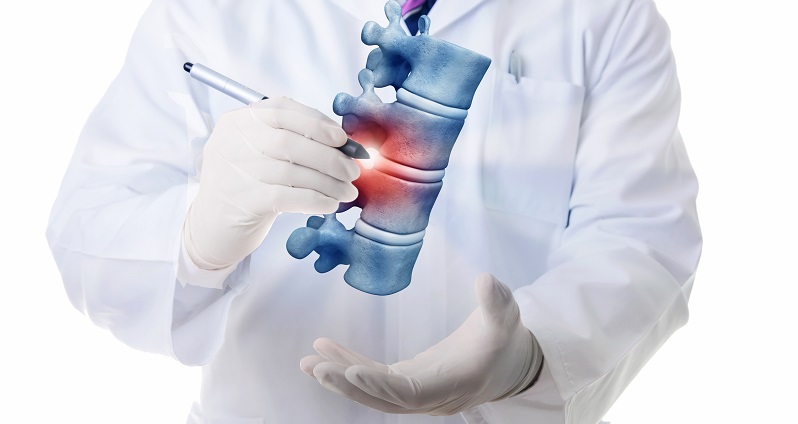5 Ways To Treat A Bulging Spinal Disc Before It Herniates
Category: Spine | Author: Stefano Sinicropi

Like gray skies and a drop in temperature that precede a spring storm, a bulging disc is a precursor to a full blown disc herniation. When a disc herniates, the gel-like center of the disc breaks through the outer fibrous layer, causing problems for the disc’s stability and potentially irritating nerves and other nearby structures. But how can you calm down a bulging disc and restore strength and stability to the affected spinal disc? In today’s blog, we share five tips for effectively treating a bulging spinal disc.
Caring For A Bulging Disc
A healthy disc transitions to a bulging disc when pressure and stress cause the disc to become a bit misshapen. The disc adapts to these forces in an effort to prevent a total disc rupture, but an untreated bulge will likely eventually herniate, which is why it’s so important to proactively treat the issue. Here are some ways to alleviate pressure on a bulging disc and provide it with an environment to restore a more normalized shape and in turn handle stress more effectively.
- Physical Therapy –Physical therapy can be a great way to restore strength and stability to the spinal region. Your PT will closely examine your spine and find ways to get you moving so that supportive structures can become stronger and better able to handle stress, in turn taking pressure off the affected disc. Physical therapy will also help to restore flexibility and overall function in an area that is currently weakened. This proactive approach tends to yield better results than some more passive options on this list.
- Rest– Rest and protection of the spinal disc is a smart way to care for your bulging disc. While rest alone won’t completely allow the disc to get back to a fully healthy state, it can ensure that the disc doesn’t worsen due to continued stress and strain. Protect the area from overly stressful actions and gradually take on more controlled exercise and movement as your back allows it. Don’t keep pursuing the same physical activities that led to the bulge in the first place, because these stress patterns can serve to overload the weakened disc.
- Posture Improvements– While an acute moment of stress can cause the spinal disc to bulge or herniate, odds are there were other issues at play that slowly compromised the integrity of the disc, and oftentimes that can be traced back to poor posture habits. If you’re regularly slumped on the couch or hunched over at your desk, the discs in your cervical and lumbar spine are going to be handling excessive stress, oftentimes for an extended period. Being more cognizant of your posture positioning and striving to make small adjustments when you notice that your alignment is beginning to suffer can help provide a better environment for disc healing to take place.
- Bracing– Sometimes a spine specialist may recommend that you wear a protective spinal brace during the early stages of your treatment for your bulging disc. These braces offer additional support to different spinal segments and can help protect the area from additional damage. It can be helpful alongside some of the previously listed treatments, but it should not be the only method you pursue, and definitely should not be used as a crutch to continue performing movements that overly stress your spine.
- Medications– Finally, many doctors recommend that patients begin a regimen of over-the-counter anti-inflammatory medications. These medications will not address the root cause of your bulging disc, but they can help to decrease symptoms associated with their formation. If these medications can help to control pain and inflammation, it may be easier for you to pursue other important treatments on this list, like physical therapy and posture improvements. Nonsteroidal anti-inflammatory drugs (NSAIDs) can be a great option when used in conjunction with other treatments listed above.
Be mindful to address your bulging disc before it transitions to a much more uncomfortable herniation. If you need professional assistance with this process, Dr. Sinicropi and his team are only one call away. Give him and the team at The Midwest Spine & Brain Institute a call today at (651) 430-3800.